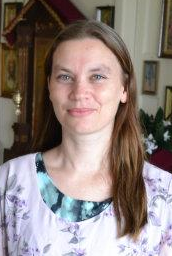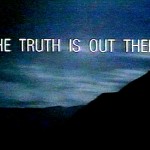by Tamara Schmerse
 Part 1 of 17
Part 1 of 17
This delightful story of Tamara’s journey is captivating. I’ve decided to publish it in it’s entirety as a series from her blog, My Search For The Truth. Enjoy this excellent journey, and thank you, Tamara, for allowing us to republish it!
My Search For The Truth (And Subsequent Finding Of It)
Foreword
The following is an attempt to explain the thought processes behind the decisions I have made in my search for religious Truth. I am not trying to make scientific arguments, accuse anyone of anything, or label any person, organisation or belief as wrong. I am only recounting the experiences I had and explaining the effect they had on me. Some names have been changed to protect identities, but everything you are about to read in these pages is, unfortunately at times, true. And that means that there are subjects touched upon which may be inappropriate for certain readers. I have been brutally honest about my experiences in this work, because it all played a part to make me the person that I am today, and teach me the lessons I have learned.
1: Seeds
I don’t know how old I was when my mother bought me The Bible For Children. It was there in my earliest memories, when I was not much bigger than the book, the bright colourful pictures, the big fancy headings, and the exciting stories about people named Adam and Eve, Noah, Moses, David, and Jesus. I didn’t like looking at the Jesus part much when I was younger – someone did some mean things to him and the pictures all looked very sad.
My mother also purchased at some point in my early childhood a small silver frame to sit on my bedside table. It had an embossed profile of a young girl kneeling, and the words,
“Now I lay me down to sleep / I pray the Lord my soul to keep”.
My mother taught me the rest of the words:
“And if I die before I wake, I pray the Lord my soul to take.”
My child’s mind made its own addendum early in the piece:
“God bless Mummy and Daddy, and all my Aunties and Uncles, and cousins, and friends, and animals, and teddy bears.”
Thus my mother instilled in me the importance of prayer at the end of the day, and through her large picture book, the message that God was not “something up there”, but a real being, with a name, a Son, and a story to tell.
Separate and apart from my mother’s influence however, I earnestly in my heart desired to please God. I remember reading in that large book that we must love God. I also read that we cannot lie to God. I remember looking up at Mummy, holding my white teddy bear, with big tearful eyes, imploring her to teach me how to “love” God when I couldn’t see Him or touch Him. In my bedtime prayers I remember trying to say “I love You God”, and then being scared because technically, it was a lie, as I didn’t know how to do it. My mother did not know how to answer my questions, and I remember hitting on a formula my infant mind thought infallible: as I clutched my raggedy teddy bear at night, I said to God,
“I want to love You God, but I can’t see you, so all this love that I am giving to my teddy bear, is really for You, because he’s not real, he’s just a toy.”
Looking back now, I honestly believe that God had His arms around me from my earliest years. Because feelings like this were not taught to me by my mother, and certainly not by my father.
My mother, like all her peers in their small outback town, attended Sunday School as a child, and then when entering High School, did not need to go anymore. That was it. They had paid their dues, their names were written in Heaven, they had no need to think about Church or God or Jesus any more in their entire lives.
 My father went through the same ritual, almost nine years earlier than my mother, but his parents were of the same persuasion: the kid’s done his Sunday School, he’s going to Heaven, that’s all he needs to do. His attitude towards the whole topic however, was very different to my mother’s: Mum talked fondly of her days at the back of the Church, of the hymns and the beautiful stories. Dad thought the whole concept was stupid, and no child of his was going to be put through the same thing. Besides which, their Church didn’t even exist anymore: the Methodist Church, where all good Cornish children were brought up, had merged with the Presbyterian Church to form the new Uniting Church In Australia, just a couple of years before I was born. So not even the nostalgic idea of me going to the same place they did was ever an issue.
My father went through the same ritual, almost nine years earlier than my mother, but his parents were of the same persuasion: the kid’s done his Sunday School, he’s going to Heaven, that’s all he needs to do. His attitude towards the whole topic however, was very different to my mother’s: Mum talked fondly of her days at the back of the Church, of the hymns and the beautiful stories. Dad thought the whole concept was stupid, and no child of his was going to be put through the same thing. Besides which, their Church didn’t even exist anymore: the Methodist Church, where all good Cornish children were brought up, had merged with the Presbyterian Church to form the new Uniting Church In Australia, just a couple of years before I was born. So not even the nostalgic idea of me going to the same place they did was ever an issue.
The extent of the education my mother received from the aforementioned Sunday School became evident to me when I entered High School. Two things stick out in my memory from that year: first, that a group called the Gideons came to my school, made us all line up in respectable lines, and handed out tiny copies of the New Testament to each and every student. It was my first look inside a real adult Bible. I noticed on the back page, there was a space to sign your name and write the date of the day you “accepted Jesus Christ as your personal Lord and Saviour”. I felt conflicted at the time: I wanted to please God, and I understood that signing my name on that line meant some sort of big commitment to Him. However, my thirteen-year-old brain didn’t feel ready to confine myself to a lifetime of “being good”. So I tucked the little book into my bag, and carried it around with me for the next six years before taking it out and looking at it again.
Secondly, that year was the first time I “learned” something that conflicted with what my big picture book had taught me as a child. The first few pages of my Bible For Children had glossy pictures of the Garden of Eden, and Adam and Eve. They were the first human beings that ever existed. However, my Year 7 History class gave me rough photocopies of ape-like creatures that changed slightly with each picture until the last picture was a man in a suit carrying a briefcase. These were the first human beings that ever existed, my history teacher told me.
I pedalled home fast after school that day and showed the picture to my mother. I remember saying “what does this mean Mum? Were Adam and Eve monkeys? Why don’t they look like the picture in my book?” My mother looked flustered and said something to the effect of “I don’t know dear, no one really knows anything about all that.”
I was crushed. The first seeds of doubt had been planted. I went to bed that night thinking that only a few years earlier, I had felt a similar sense of doubt about the Easter Bunny, and upon enquiry, discovered that there was no such thing, that it was all a trick invented to make children behave themselves. A year later, the same thing with Santa Claus. I resigned myself to the fact that in a few days, I would probably be getting a similar “talk” concerning God.
The “talk” never came, and I pushed the confusing thoughts out of my head. With no other, or indeed, any, religious influence in my life, it was not difficult to find years flying by without giving God a second thought.
That changed however when I was 19.

Leave a Reply